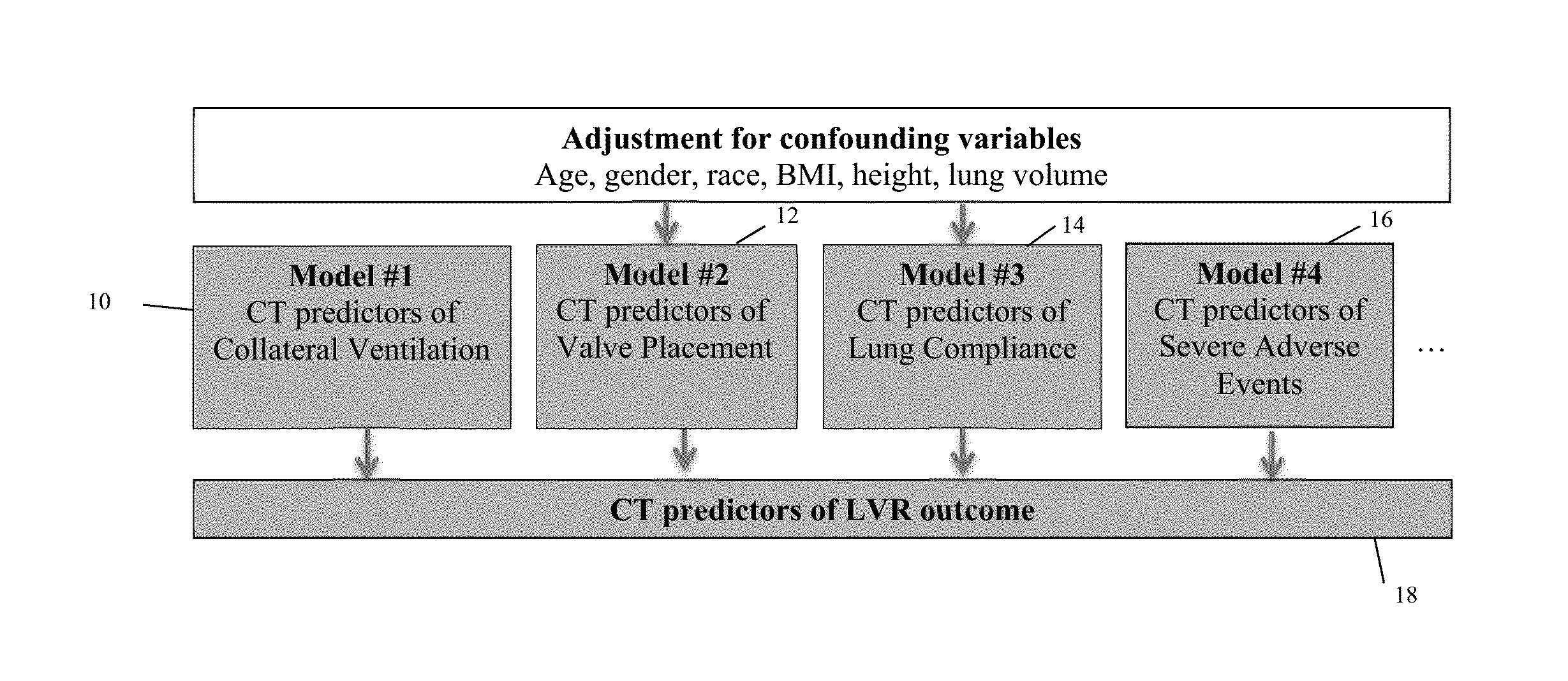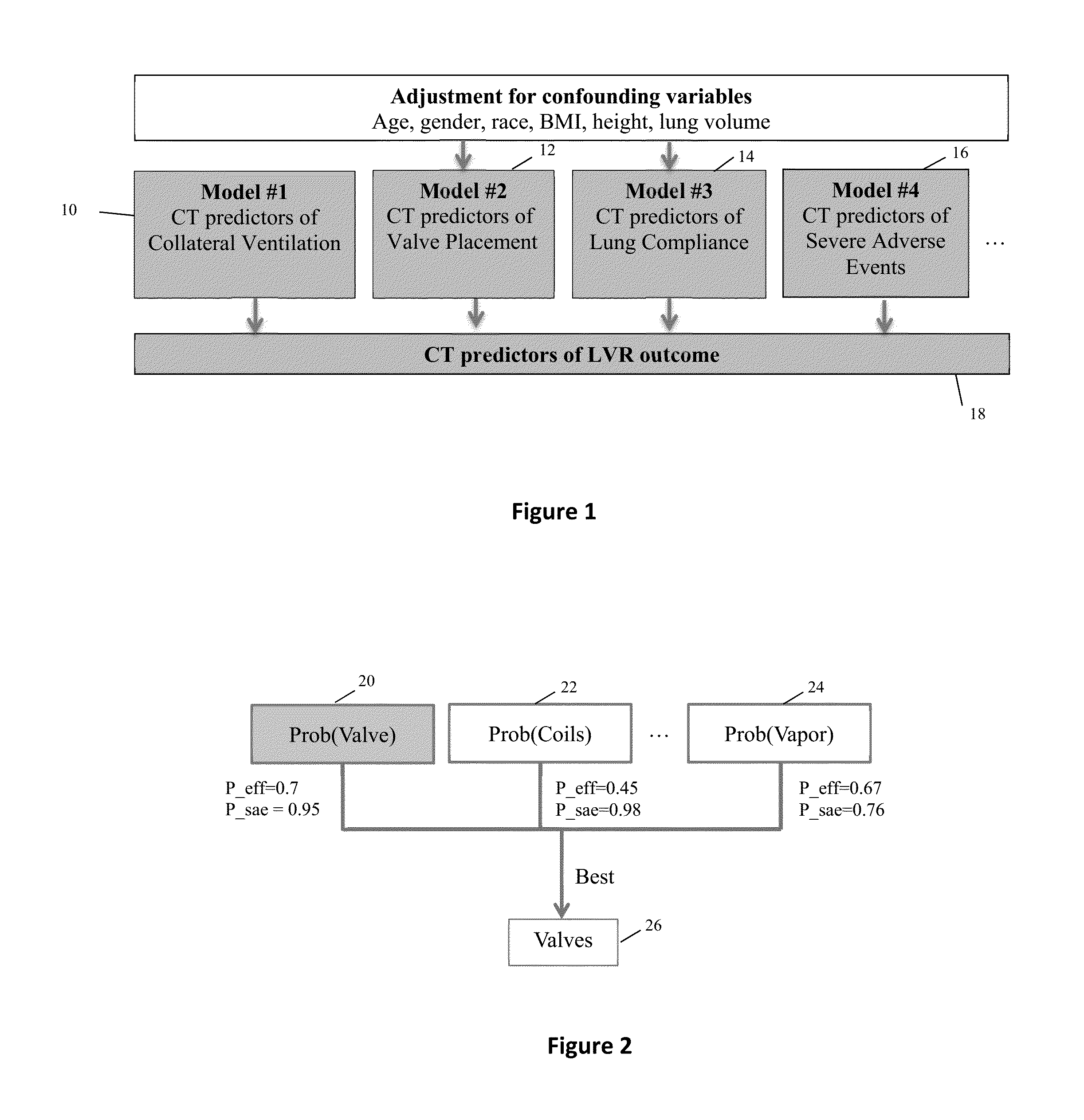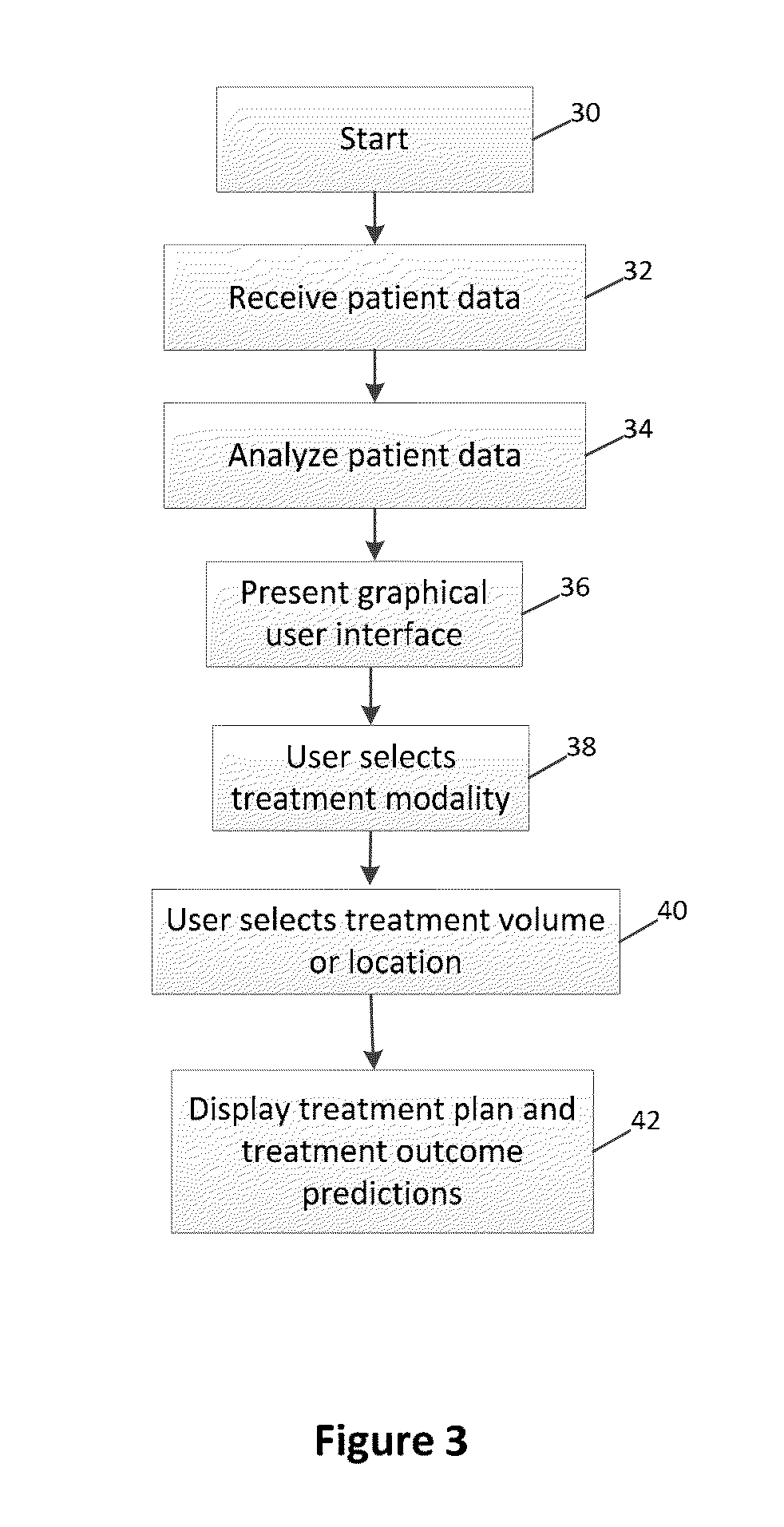Treatment outcome prediction for lung volume reduction procedures
a technology for lung volume reduction and treatment outcome, which is applied in the field of treatment outcome prediction of lung volume reduction procedures, can solve the problems of difficult planning for such procedures, risky and uncomfortable for patients, and difficult to determine which locations are best suited for valve placement and whether the location is suitabl
- Summary
- Abstract
- Description
- Claims
- Application Information
AI Technical Summary
Benefits of technology
Problems solved by technology
Method used
Image
Examples
example 1
[0085]Valve misplacements due to complex anatomy have been previously reported but little was known about anatomical factors linked to these procedural issues. In this example, the anatomical properties leading to optimal delivery of a valve to a targeted airway were investigated.
[0086]The CT scans of 184 subjects were retrospectively analyzed. The subjects had severe emphysema and had undergone an LVR procedure following a unilateral complete occlusion protocol. The CT images included baseline images (obtained prior to the procedure) and images obtained at 3-months follow-up. The follow-up scans were used to assess the presence or absence of valve placement problems. When valve placement problems were identified, they were classified as Type I or Type II. Procedural errors due to valves not being located in the targeted branch, i.e., being located partially or entirely in a sub-segmental branch, were identified as Type I error. Lack of airway collapse distal to valve placement, eit...
example 2
[0091]In this example, the relationship between lung volume reduction and the occurrence of pneumothorax was retrospectively analyzed using CT images. CT scans of 183 subjects with severe emphysema were analyzed. The subjects had all undergone lung volume reduction with valves were following a unilateral complete occlusion protocol. The CT scans were acquired at Total Lung Capacity (TLC) and included a baseline scan and a follow up scan at 3 months after the procedure. The volumes of treated lobes were measured on the baseline and 3-month follow-up CT scans. Post-procedural pneumothorax events were identified and valve placement errors were studied retrospectively by analyzing follow-up CT images. Thirty-five baseline variables including confounding variables (personal characteristics as described above), CT quantitative measurement of fissure integrity (FI), density, and vessel measurements were used to feed a logistic regression analysis in order to find significant predictors of ...
example 3
[0095]This example was performed to evaluate the relationship between fissure integrity and lung volume reduction procedure outcome. CT scans of 183 subjects with severe emphysema were analyzed as in Example 2. The subjects had all undergone lung volume reduction with valve placement following a unilateral complete occlusion protocol using either endobronchial valves (Zephyr™ valves from Pulmonx Inc.; n=37) or intrabronchial valves (IBV® valves from Olympus Medical Co.; n=146). The CT scans were acquired at full inspiration and included a baseline scan prior to the procedure and a follow up scan at 3 months after the procedure. Volumes of treated lobes were measured on baseline and 3-month follow-up CT scans, and a lobar volume reduction greater than 350 cc was considered to be indicative of positive response to treatment. Thirty-five baseline variables including confounding variables (personal characteristics as described above), CT quantitative measurement of fissure integrity (FI...
PUM
 Login to View More
Login to View More Abstract
Description
Claims
Application Information
 Login to View More
Login to View More - R&D
- Intellectual Property
- Life Sciences
- Materials
- Tech Scout
- Unparalleled Data Quality
- Higher Quality Content
- 60% Fewer Hallucinations
Browse by: Latest US Patents, China's latest patents, Technical Efficacy Thesaurus, Application Domain, Technology Topic, Popular Technical Reports.
© 2025 PatSnap. All rights reserved.Legal|Privacy policy|Modern Slavery Act Transparency Statement|Sitemap|About US| Contact US: help@patsnap.com



